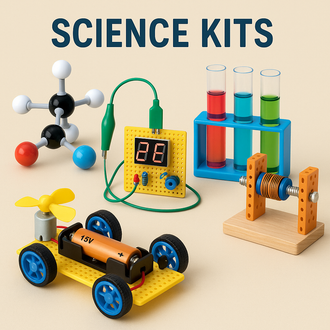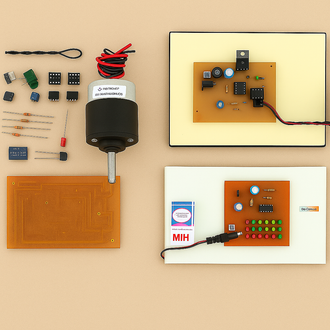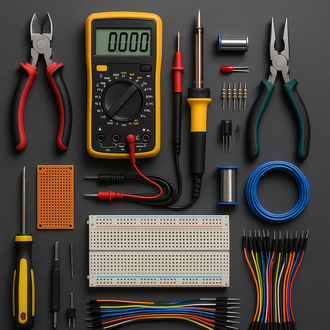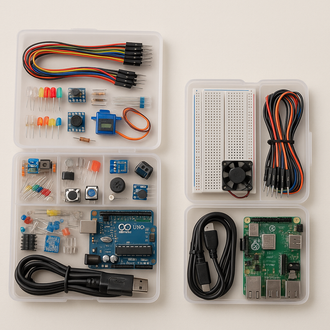
The Ultimate Guide to E-Bike Controllers
- 07 Oct, 2025
If you're building or updating your own electric bike, the controller is the brain of the system. It controls the power transfer from your battery to your motor, which affects speed, acceleration, braking, and even battery life. No matter how much experience you have, knowing how to install and use an ebike controller will make your ride better.
What is an E-Bike Controller and Why is it Important?
An ebike controller is an electronic device that connects your battery to the ebike motor. It controls how much electricity goes to the motor based on sensor inputs, pedal assist levels, and the position of the throttle. Think of it as your e-bike's "engine control unit," which controls the power supply, torque, and speed.
Different kinds of controllers for e-bikes
Before you start wiring, it's important to know the main types of e-bike controllers:
- Brushed DC Controllers: These controllers are simple and cheap, and you can usually find them on entry-level electric motorcycles.
- Brushless DC (BLDC) controllers are made for ebike hub motor systems. They make the system work more quietly, more efficiently, and more smoothly. Sine wave controllers are great for high-end e-bikes because they make acceleration much smoother and make less noise.
- Square wave controllers are cheaper, give a lot of torque, but work a little rougher.
How E-Bike Controllers Work
The controller gets signals from many different sources, such as the throttle, brake levers, pedal sensors, and speed sensors. Then, algorithms control how much power the electric motor hub kit puts out. Some high-end cars even have regenerative braking systems that send power back to the battery.
Step-by-step instructions for installing it yourself
Follow these simple steps to connect your e-bike controller correctly:
Step 1: Figure Out What You Need
You need a battery, an e-bike engine, a throttle, and sensors. A display is also an option. Make sure that all of the connectors work with each other.
Step 2: Put the battery in place
Always connect the main power wire last. Check the polarity (+/-) again before connecting to avoid short circuits.
Step 3: Attach the motor
Connect the three phase wires (usually yellow, green, and blue) and the matching hall sensor wires between the motor and the controller.
Step 4: Link the throttle and sensors
If you want to, you can connect the PAS (Pedal Assist Sensor) and the throttle. Some e-bike systems with electric motor ebike setups might also have brake cut-off sensors for extra safety.
Step 5: While testing the e-bike's system power, slowly turn the throttle. If the wheel spins smoothly and does what you want it to, you've successfully put in your controller!
How to Fix Common Problems with E-Bike Controllers
Even a small mistake in connecting your e-bike system could cause it to stop working. Here are some common problems and their solutions:
- If the motor isn't turning, check to see if the hall sensors are not connected or the cables are in the wrong phase.
- Make sure the square wave and sine wave controllers are set up correctly if the acceleration is jerky.
- No power at all: Make sure the fuse is still good and check the battery's output voltage.
- Make sure the controller doesn't get too hot by using the right motor power rating and making sure there is enough airflow.
How to Choose the Right Controller for E-Bikes
Make sure the controller you choose works with your e-bike's hub motor and battery. Here are some things to look for:
- Check that the battery and controller have the same voltage, such as 24V, 36V, or 48V. Choose a controller with a current rating that is just a little bit higher than what your motor needs.
- Type of connector: Make sure the plug fits your motor harness.
- Size of the controller: Smaller designs work better with e-cycle kits and do-it-yourself frames.
Improving Your Hub Kit for Electric Motors
Many people change their electric motor hub kit to make it work better or more smoothly. Changing to a sine-wave controller can make things much quieter and make the throttle respond faster. Combine your smart e-bike with a modern LCD screen and pedal-assist technology to make it even smarter.
Safety Tips and Advice for Doing It Yourself
- Always take the battery out before changing the wiring.
- Use heat-shrink tubing and watertight connectors to make things last longer.
- Don't put the controller in direct heat or near moving parts.
- Label your wires so you know which system they belong to if you are working on more than one.
Benefits of Building Your Own E-Bike Controller System
There are a number of benefits to customizing your settings:
- Performance tuning: Change the motor's torque and throttle response to fit the way you like to ride.
- Cost-effectiveness: Installing something yourself is cheaper than buying a pre-made kit.
- Repair Flexibility: It's easy to switch out parts when you need to.
- Learning Experience: Learn useful skills in mechanics and electronics.
In the end, use the right controller to power your ride.
A properly adjusted controller will make your e-bike work at its best, with reliable brakes, smooth acceleration, and less battery use. Learning about controllers can help you get better performance and safety, whether you're changing a commercial e-bike or building your first do-it-yourself project.
KitsGuru has a huge selection of tried-and-true ebike controller options, compatible parts for your ebike motor and ebike hub motor, plus accessories to create your perfect ride.
















